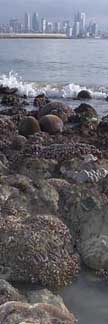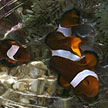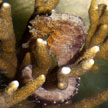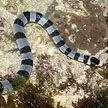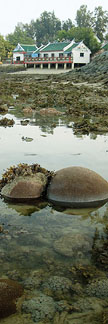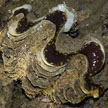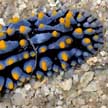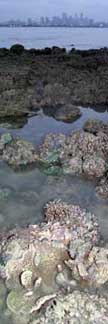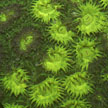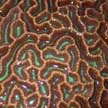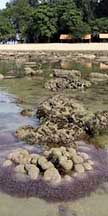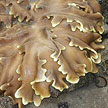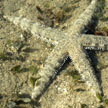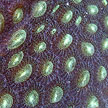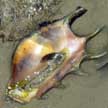 EXPLORE•EXPRESS•ACT!
EXPLORE•EXPRESS•ACT! |
|
|
|
Uniquely
Singapore: City Reefs!
(a personal letter submitted to REACH on plans
to develop the Southern Islands announced in 2006, updated
May 07)
Our Southern Island reefs are ALIVE!
The reefs in Singapore harbour close to 200 species of hard
corals. Amazing marine life abound: such as clown anemonefishes
(better known as 'Nemo'), anemone shrimps, sea horses, giant
clams, octopus, nudibranchs and more. 111 reef fish species
from 30 families were also recorded. Here's photos
of our city reefs on Labrador,
Sentosa, Kusu
Island, St. John's Island,
Sisters Islands and Lazarus
Island.
Within minutes of the city centre
These reefs can be reached within minutes of the city centre!
Where else in the world can a tourist go from a high-level business
meeting at a world class hotel to visit a living reef, in under
half an hour? Our accessible reefs would be attractive to those
with a busy schedule or who would want an easy and quick introduction
to tropical reefs.
No need to swim, no need to dive!
Our reefs can be explored at low tide by non-divers, ordinary
people and young children. An ideal trip for the family! Regular
reefwalks are currently already being held by the Blue
Water Volunteers at Kusu Island.
Labrador, our last mainland reef, is particularly popular with
students.
Spectacular dives too!
Divers can also enjoy spectacular sights on our Southern reefs,
such as a wall of sea anemones that are homes to lots of clown
anemonefishes. Jani (a marine biologist) has posted on her Blue
Tempeh blog, links and photos of dives
at all our Southern reefs. There's a lot more to our reefs
than most divers imagine.
Sedimentation is an issue
Sedimentation of our Southern waters has reduced visibility
from 10m in the 1960s to 2m or less today. Visibility is not
ALWAYS bad, there are some periods of good visibility. See discussion
on the habitatnews
blog and some visits to our reefs with spectacular visibility
in Apr 07 here
and here.
Although our waters are murky, a wide diversity of marine creatures
can still be encountered in our seas. These include regular
sightings of wild dolphins and sea
turtles.
Imagine if we can improve the visibility of our seas!
Sedimentation is like the Haze. It cuts out sunlight and affects
the growth of our hard corals. Hard corals are made up of tiny
animals called polyps that harbour microscopic algae (symbiotic
zooxanthallae). The algae produce nutrients using sunlight,
through photosynthesis, and shares this food with the polyps.
Sedimentation also coats the polyps which then have to expend
energy to keep themselves 'clean'. More sunlight thus helps
corals grow faster and keeps them healthier.
How can we control sedimentation?
The Haze descends upon us when the wind is in the 'wrong' direction.
Don't we wish burning wouldn't happen when the wind is blowing
in our direction?
In the same way, sedimentation plumes resulting from construction
and other coastal activities are spread to our reefs by the
water currents. Water currents change with tides and the seasons,
just as the winds blow in a different direction with the monsoons.
A proper understanding of currents and water flows should help
us time such work and minimise sedimentation plumes. Just as
the haze clears when the wind blows in a different direction.
If we can achieve reduced production of sedimentation and/or
time it so the plumes are directed away from our reefs, we would
have clear waters around our reefs! And our reefs could become
as spectacular as any in Malaysia or Thailand.
The price of our reefs
Achieving vibrant living reefs can potentially generate MORE
revenue than simply attracting paying visitors. If we can clear
up our waters, this know-how will be valued by others in the
region who are or will increasingly face the same situation.
Singapore has overcome our limited water supply by developing
technologies, policies and processes. These are now 'exported'
and Singapore companies are making money doing so. In the same
way, overcoming the sedimentation issue can potentially generate
revenue and gain Singapore international standing in sustainable
development.
Developing our wild places for well-heeled global clients seems
be a recent emphasis. Doing so in a sustainable manner with
sensitivity to existing ecosystems may bring a higher premium.
See Designer villas
go green
Cheah Ui-Hoon Business Times 19 May 07.
It seems a shame that in developing artificial marine habitats,
we destroy existing natural marine habitats. Often because we
don't even bother to find out what is there. See the
coral reefs on Sentosa that will be reclaimed for the Integrated
Resort.
Wild places are relatively cheaper to maintain. Natural
places are horrendously difficult and expensive to duplicate.
The costs of running the Zoo, Bird Park, marine parks are not
only in terms of money, but also in the lives lost and damage
caused through the need to continuously replace animal specimens
from the wild. A natural place like Chek Jawa and our Southern
shores cost far less but offers far more in terms of spectacular
diversity and unending seasonal changes. And it is uniquely
ours and ours alone.
The value of our reefs
Beyond the revenue reefs might generate, they provide important
value to Singapore and Singaporeans.
Wild reefs are natural classrooms, where learning is
spontaneous. In wild natural surroundings, children's natural
curiosity get the better of them. In ways hard to duplicate
in artificial teaching situations, children on the seashore
can explore not only ecology, but also learn about our history
and economics (e.g., history of coastal peoples, civilisation
in southeast asia and the sea trade).
Building family bonds: A family outdoors becomes a natural
family. On a camping trip, shore walk, picnic, boating or dive
trip; the parents lead, protect and guide the children. Children
spontaneously discover; not only about nature, but also about
themselves, one another and their roles in the family. Physical
limits of comfort and stamina are tested and overcome. These
are the treasured moments of childhood and parenthood. This
kind of bonding is hard to duplicate say, in a shopping centre
or artificial entertainment centre.
Building bonds across cultures and races: The wonder,
awe and enjoyment of nature cuts across barriers. Bonds created
in a group outing in the wild go beyond culture and are stronger
than any made in an artificial environment. The respect for
nature that is the basis of all religions and cultures can form
the starting point for better understanding and stronger ties
among citizens.
Building bonds to the country: Singapore is in danger
of becoming a giant concrete island city with straight line
contours under a bubble of airconditioning. Any bits of 'nature'
found only in artificial settings, such as marine parks with
mechanised creatures.
How can a citizen connect with such a Singapore? The Singapore
of his childhood is gone. The new Singapore is sanitary, a Disneyquese
virtual reality. No different from any other modern city in
the world. Except everything is smaller and more expensive.
How sad if Singaporeans have to escape overseas to have a natural
wild experience. The bonding happens elsewhere; the family album
is filled with happy moments in Malaysia, Australia, China.
Staying in Singapore is equated with the drudgery of work and
school. Eventually, only the well-to-do can enjoy a superior
experience in wild places.
Even sadder if the Southern Shores is reserved for wealthy tourists.
Singaporeans will not even be able to enjoy their own wild places.
For simple low-cost pleasures such as fishing, a picnic or camping
under the stars.
The ideal nature visitor is also the ideal citizen. Someone
who respects other people and lifeforms. He does not litter,
vandalise or annoy wildlife and other visitors. He is patient,
eager to learn and share with others. He knows he is not the
centre of the universe. He knows his actions will affect the
lifestyle and surroundings that he leaves to his children. Exposure
to wild natural places brings soul to the nation.
Last chance for our magnificent natural reefs? The Southern
Islands are the last of our shores currently spared from extensive
reclamation.
There was once over 60 offshore islands and patch reefs around
Singapore. Since the mid 1970s, most of the southern islands
were reclaimed. Some islands were merged as a result and the
reef flats of many islands were reclaimed. Many coral reef organisms
were smothered by the reclamation, while others were severely
affected by the resulting increase in underwater sediments.
Since 1986, most coral reefs in Singapore have lost up to 65%
of their live coral cover.
Consider
price AND value: Let us consider the value of our natural
assets and not just their price. Let us not be among those who
know the price of everything but the value of nothing.
Beyond the reefs
Singapore is probably the only place in the world where a tourist
can visit a rainforest, a mangrove, a coral reef all within
half an hour from the central business district (and a cold
beer in a 6-star hotel). More about these wild
places.
Yes, our wild places may not rival those of neighbouring countries
in size. But ours are strong representatives. And they make
a good first introduction to these magnificent and rapidly vanishing
habitats. Something that busy business travellers can squeeze
into their schedules.
For many visitors, it might be the only opportunity they can
get to experience tropical habitats first hand. No doubt, most
will also be impressed at how urban Singapore still has so much
that remains wild.
Our assembly of natural wild places are unique. We should treasure
them and be proud to showcase and share them with the world!
Other responses to the plan
Letters to the media
Blog posts
Media reports on the
plan |
|
Links
updated 4 Dec 06
Dolphin
sighting in Singapore
on
the habitatnews
blog
Sea
turtle sightings in Singapore
- Hawksbill
turtle hatchling rescue and release at East Coast Park:
More photos and lots more details of this on the habitatnews
blog
- Turtles
rescued fron drains more photos on the ubin
volunteer blog
- Blue
Tempeh meets Aunty Betsy under the sea (Pulau Hantu) photos
and story on the habitatnews
blog
- The
curse of marine litter and their impact on sea turtles on
the habitatnews
blog
- Sea
turtle seen on Hantu Bloggers' first anniversary dive on
the habitatnews
blog
- RF
Xplore explores Hantu with photos of sea turtle and lots
of other marine life on The
Blue Tempeh blog
- Wonderful
diving at Pulau Hantu with lots of photos of the sea turtle
on the Colourful
Clouds blog
Related
issues
- What
are the considerations in evaluating a proposal to reef
rehabilitation?
See
this PDF document on the Reef Check website "Beware
Hype on Artificial Reef Rehabilitiation" a document
of the International
Coral Reef Initiative which in summary states, among
others, that "The most effective mechanism of rehabilitating
coral reefs is through mitigation of chronic human disturbances
(e.g. sedimentation, pollution and over-fishing), thereby
facilitating natural recovery mechanisms and building resilience,
to any further disturbances, that will be effective over
large areas";
Media
articles about the plan
see
also Southern Shores
Development including the Sentosa IR
Letters
to the press about the plan
Blog
reponses to the plan
My thoughts
about our wild places
|
|
|
|
|
|
|

